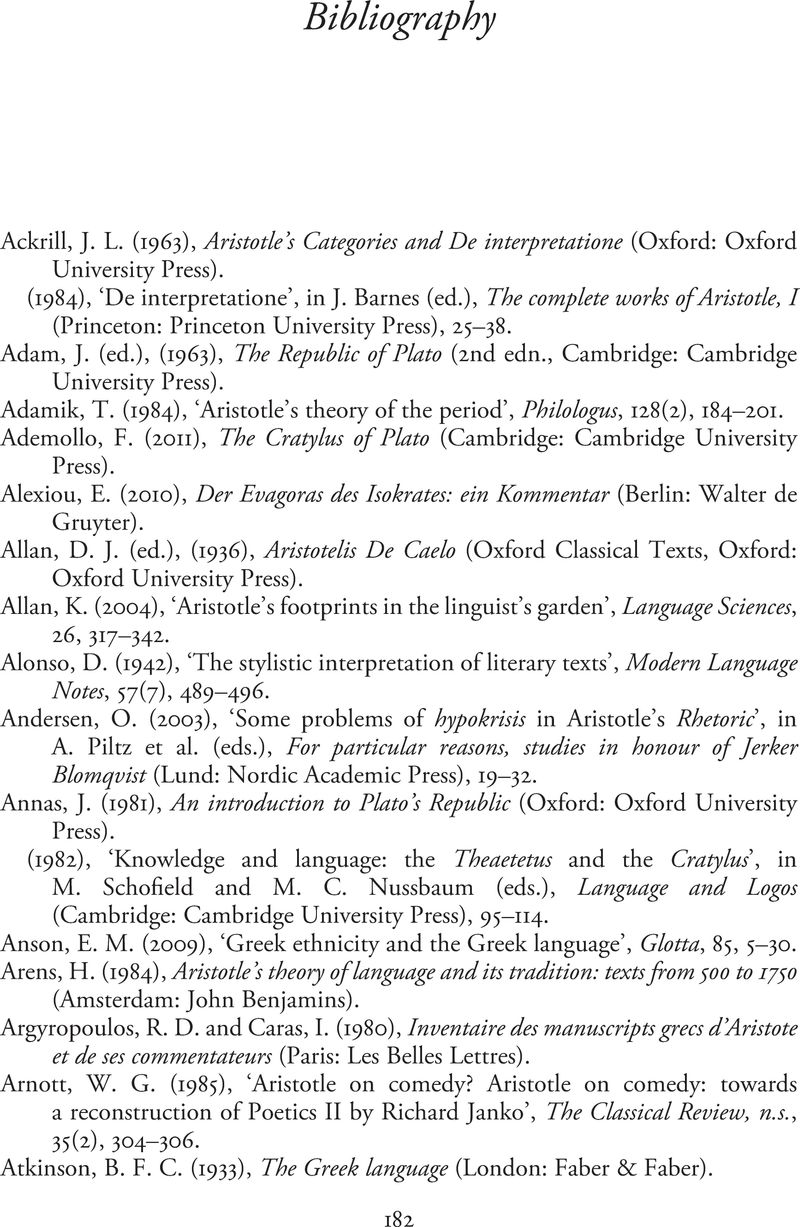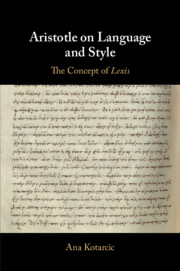Book contents
- Aristotle on Language and Style
- Aristotle on Language and Style
- Copyright page
- Dedication
- Contents
- Tables
- Preface
- Abbreviations and Conventions
- Introduction
- Chapter 1 On the Way to Aristotle’s Concept of Lexis
- Chapter 2 The First Level of Lexis
- Chapter 3 The Second Level of Lexis
- Chapter 4 The Third Level of Lexis
- Chapter 5 The Third Level of Lexis
- Chapter 6 Metaphor Revisited
- Appendix Lexis in Plato’s Republic 3.392c7–398b8
- Bibliography
- Index Locorum
- Index Verborum Graecorum
- Index Generalis
- References
Bibliography
Published online by Cambridge University Press: 30 October 2020
- Aristotle on Language and Style
- Aristotle on Language and Style
- Copyright page
- Dedication
- Contents
- Tables
- Preface
- Abbreviations and Conventions
- Introduction
- Chapter 1 On the Way to Aristotle’s Concept of Lexis
- Chapter 2 The First Level of Lexis
- Chapter 3 The Second Level of Lexis
- Chapter 4 The Third Level of Lexis
- Chapter 5 The Third Level of Lexis
- Chapter 6 Metaphor Revisited
- Appendix Lexis in Plato’s Republic 3.392c7–398b8
- Bibliography
- Index Locorum
- Index Verborum Graecorum
- Index Generalis
- References
Summary

- Type
- Chapter
- Information
- Aristotle on Language and StyleThe Concept of <I>Lexis</I>, pp. 182 - 203Publisher: Cambridge University PressPrint publication year: 2020



